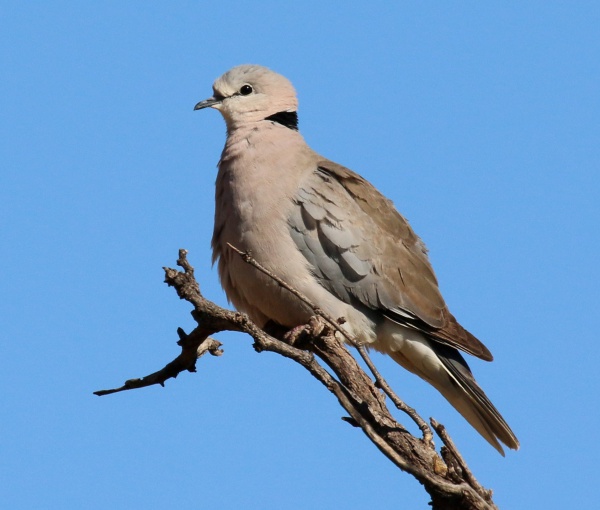Facts About Ring-necked dove
The ring-necked dove, also known as the Cape turtle dove or half-collared dove, is a familiar sight in eastern and southern Africa. This bird is easily recognized by its unique call and the semi-collar of black feathers adorning its neck. Typically sedentary, these doves thrive in various open habitats and are often seen congregating in large flocks at waterholes to drink and bathe.
In terms of appearance, ring-necked doves have dark upper feathers in shades of grey and brown, while their undersides are paler with a touch of pinkish lavender. Their tail feathers have white fringes, which are especially noticeable when they take flight. Both males and females look quite similar, although males are slightly larger.
These doves are adaptable and can be found in a range of environments, from semi-desert scrublands to woodlands and farmlands. Despite their adaptability, they do face threats from various predators. Ring-necked doves are monogamous and are known to raise multiple broods in a single season. Their diet mainly consists of seeds, fruits, berries, and insects.
There are six subspecies of ring-necked doves, each with slight variations in plumage color. While they resemble other Streptopelia species, they can be distinguished by their distinct call and specific plumage features. Typically, they are seen alone or in pairs, but they can form larger groups around abundant food and water sources. These doves are known for their loud calls and distinctive flight patterns, making them a notable presence in their habitats.

 South Africa
South Africa